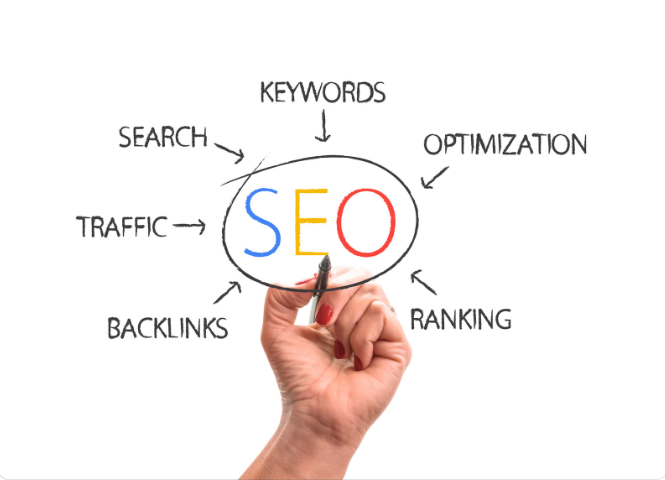On-page SEO is crucial for ensuring your website ranks high in search engine results. It involves optimizing individual web pages to improve their search engine rankings and attract more organic traffic. This guide will walk you through the essential aspects of on-page SEO, including best practices, techniques, and tips to help your website stand out.
What is On-Page SEO?
On-page SEO refers to the practice of optimizing web page content and HTML source code to improve a website’s visibility in search engine results pages (SERPs). This includes elements like meta tags, title tags, content, internal links, and URLs. By focusing on these elements, you can help search engines understand your content and rank it more effectively.
Why On-Page SEO Matters
- Improves Search Engine Rankings: Proper on-page SEO techniques help search engines understand the context of your content, making it easier for them to rank your pages.
- Enhances User Experience: Good on-page SEO practices make your website more user-friendly, improving readability and navigation.
- Increases Organic Traffic: By ranking higher in search results, your website will attract more organic traffic, leading to more potential customers.
Key Elements of On-Page SEO
1. Title Tags
Title tags are one of the most important on-page SEO elements. They appear in the search engine results and are the first thing users see.
Best Practices:
- Keep it under 60 characters.
- Include the primary keyword near the beginning.
- Make it compelling and relevant to the content.
2. Meta Descriptions
Meta descriptions provide a summary of the page content and appear below the title tag in search results.
Best Practices:
- Keep it between 150-160 characters.
- Include the primary keyword.
- Write a compelling and informative description.
3. Header Tags (H1, H2, H3, etc.)
Header tags structure your content, making it easier for users to read and for search engines to understand.
Best Practices:
- Use H1 tags for the main title of the page.
- Use H2 tags for subheadings.
- Ensure each page has only one H1 tag.
- Include keywords in your headers.
4. URL Structure
A clean and descriptive URL structure helps search engines understand the content of your page.
Best Practices:
- Keep URLs short and descriptive.
- Use hyphens to separate words.
- Include keywords in the URL.
5. Keyword Optimization
Keywords are the foundation of on-page SEO. Properly optimized keywords help search engines understand the content of your page.
Best Practices:
- Conduct keyword research to find relevant keywords.
- Use primary keywords in the title, meta description, headers, and throughout the content.
- Avoid keyword stuffing; use keywords naturally.
6. Content Quality
High-quality content is essential for on-page SEO. Search engines prioritize content that is relevant, informative, and valuable to users.
Best Practices:
- Create original, informative, and engaging content.
- Use keywords naturally within the content.
- Include images, videos, and infographics to enhance the content.
- Update content regularly to keep it fresh.
7. Internal Linking
Internal linking helps search engines understand the relationship between different pages on your website. It also helps users navigate your site.
Best Practices:
- Use descriptive anchor text for internal links.
- Link to relevant pages within your website.
- Ensure a logical and organized link structure.
8. Image Optimization
Optimizing images improves page load speed and helps search engines understand the content of your images.
Best Practices:
- Use descriptive file names for images.
- Include keywords in the image alt text.
- Compress images to reduce file size.
- Use responsive images for different devices.
9. Mobile-Friendliness
With the increasing use of mobile devices, having a mobile-friendly website is crucial for on-page SEO.
Best Practices:
- Use responsive design to ensure your site looks good on all devices.
- Test your site on different devices to ensure usability.
- Optimize page load speed for mobile users.
10. Page Load Speed
Page load speed is a critical factor in on-page SEO. Slow-loading pages can lead to high bounce rates and lower rankings.
Best Practices:
- Compress images and use lazy loading.
- Minimize HTTP requests.
- Use a content delivery network (CDN).
- Optimize CSS, JavaScript, and HTML.
Tools for On-Page SEO
Several tools can help you optimize your on-page SEO efforts:
- Google Search Console: Provides insights into how Google views your site and helps you monitor and troubleshoot issues.
- Yoast SEO: A WordPress plugin that helps you optimize your content for SEO.
- Ahrefs: Offers a comprehensive suite of SEO tools, including site audits and keyword research.
- SEMrush: Provides in-depth SEO analysis, including on-page SEO recommendations.
- Moz: Offers various SEO tools, including keyword research, site audits, and rank tracking.
Conclusion
On-page SEO is a vital aspect of your overall SEO strategy. Optimizing your content, meta tags, URLs, and other key elements can improve your website’s visibility and attract more organic traffic. Remember to keep your content user-friendly and valuable, as this will not only help with search engine rankings but also enhance the user experience.
By following the best practices and using the right tools, you can master on-page SEO and achieve better search engine rankings. Keep learning and updating your strategies to stay ahead in the ever-evolving world of SEO.


Recent Comments